| Operation Resolute | |
|---|---|
| Objective | Patrols of Australia's Exclusive Economic Zone |
| Date | 17 July 2006 |
| Executed by | Maritime Border Command |
| Outcome | Ongoing |
Operation Resolute is the involvement of the Australian Defence Force (ADF) in Australian government efforts to prevent unauthorised entries to sovereign Australian territory. This has mainly taken the forms of: remote surveillance; air, sea and land patrols by ADF personnel; seizure of "suspected irregular entry vessels", and; locating/assisting people who have entered Australia via such a vessel (prior to the apprehension of such people by relevant civilian authorities). Operation Resolute began on 17 July 2006 and consolidated a number of previous ADF operations, including Operation Relex.
Operation Resolute is commanded by the joint civilian-military Maritime Border Command and the ADF contributes Royal Australian Navy ships, Royal Australian Air Force aircraft and patrols from the Australian Army's Regional Force Surveillance Units as required.
Defence personnel and civilians deployed may be eligible for the Australian Operational Service Medal, specifically the Australian Operational Service Medal – Border Protection (AOSM-BP).
17 July 2006 to 16 July 2006
| Rotation | Date from | Date to | Major Fleet Unit(s) | Unit/Sub Unit |
|---|---|---|---|---|
| TSE | ||||
| TSE | ||||
| TSE | ||||
| TSE | ||||
| TSE | ||||
| TSE 68 | ||||
| TSE 69 | Mar 2013 | Jul 2013 | ||
| TSE 70 | Jun 2013 | Nov 2013 | ||
| TSE 71 | Oct 2013 | Apr 2014 | HMAS Stuart, HMAS Parramatta | 5 RAR, 2 DIV units/ 8 BDE, RAAF |
| TSE 72 | Mar 2014 | Jul 2014 | ||
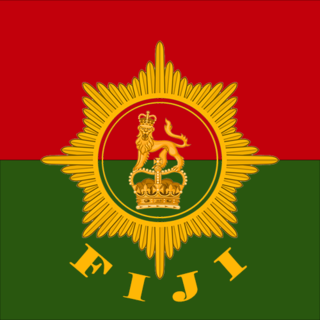
The Republic of Fiji Military Forces is the military force of the Pacific island nation of Fiji. With a total manpower of about 6,500 active soldiers and approximately 6,200 reservists, it is one of the smallest militaries in the world and the third largest in the South Pacific region. The Ground Force is organised into six infantry and one engineer battalions.

The Papua New Guinea Defence Force (PNGDF) is the military organisation responsible for the defence of Papua New Guinea. It originated from the Australian Army land forces of the territory of Papua New Guinea before independence, coming into being in January 1973 and having its antecedents in the Pacific Islands Regiment. The PNGDF is a small force, numbering around 3,600 personnel, and consists of a Land Element, an Air Element and a Maritime Element. It is a joint force tasked with defending Papua New Guinea and its territories against external attack, as well as having secondary functions including national-building and internal security tasks.
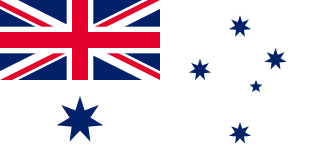
The Royal Australian Navy (RAN) is the naval force of the Australian Defence Force (ADF). The professional head of the RAN is Chief of Navy (CN) Vice Admiral Mark Hammond AM, RAN. CN is also jointly responsible to the Minister of Defence (MINDEF) and the Chief of Defence Force (CDF). The Department of Defence as part of the Australian Public Service administers the ADF. In 2023, the Surface Fleet Review was introduced to outline the future of the Navy.

The Royal Australian Air Force (RAAF) is the principal aerial warfare force of Australia, a part of the Australian Defence Force (ADF) along with the Royal Australian Navy and the Australian Army. Constitutionally the Governor-General of Australia is the de jure Commander-in-Chief of the Australian Defence Force. The Royal Australian Air Force is commanded by the Chief of Air Force (CAF), who is subordinate to the Chief of the Defence Force (CDF). The CAF is also directly responsible to the Minister for Defence, with the Department of Defence administering the ADF and the Air Force.

The Australian Defence Force (ADF) is the military organisation responsible for the defence of the Commonwealth of Australia and its national interests. It has three branches: the Royal Australian Navy (RAN), Australian Army and the Royal Australian Air Force (RAAF). The ADF has a strength of just over 89,000 personnel and is supported by the Department of Defence and several other civilian agencies.

A coast guard or coastguard is a maritime security organization of a particular country. The term embraces wide range of responsibilities in different countries, from being a heavily armed military force with customs and security duties to being a volunteer organization tasked with search and rescue without law enforcement authority. In most countries, a typical coast guard's functions are distinct from those of the navy and the transit police, while in certain countries they have similarities to both.
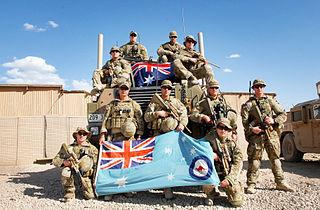
Airfield Defence Guards (ADG) are a mustering of the Royal Australian Air Force (RAAF) that are dedicated to the security and ground defence of airbases and other military aviation assets. Other duties include training other RAAF personnel, in skills such as the handling of small arms and infantry tactics. They do not, however, operate anti-aircraft artillery or missiles.

The Australian contribution to the war in Afghanistan has been known as Operation Slipper (2001–2014) and Operation Highroad (2015–2021).

The Norwegian Armed Forces is the military organization responsible for the defence of Norway. It consists of five branches, the Norwegian Army, the Royal Norwegian Navy, which includes the Coast Guard, the Royal Norwegian Air Force, the Home Guard, and Norwegian Cyber Defence Force as well as several joint departments.
Operation Relex is the name given to the Australian Defence Force (ADF) border protection operation in the country's northern approaches conducted between 2001 and 2006. The operation was instigated following the Tampa affair in September 2001 and the Australian government's resultant Pacific Solution. The focus of Operation Relex was illegal immigration, with assets from all three services of the ADF deployed to prevent the arrival of Suspected Illegal Entry Vessels (SIEVs) in the Australian migration zone.

The NORFORCE is an infantry regiment of the Australian Army Reserve. Formed in 1981, the regiment is one of three Regional Force Surveillance Units (RFSUs) employed in surveillance and reconnaissance of the remote areas of Northern Australia. It consists of a regimental headquarters, four surveillance squadrons, and an operational support squadron and training squadron.

The Armidale class is a class of patrol boats built for the Royal Australian Navy (RAN). Planning for a class of vessels to replace the fifteen Fremantle-class patrol boats began in 1993 as a joint project with the Royal Malaysian Navy, but was cancelled when Malaysia pulled out of the process. The project was reopened in 1999 under the designation SEA 1444, with the RAN as the sole participant. Of the seven proposals tendered, the Austal/Defence Maritime Services (DMS) proposal for twelve vessels based on an enlarged Bay-class patrol boat was selected. Two additional boats were ordered in 2005 to provide a dedicated patrol force for the North West Shelf Venture.
The Regional Force Surveillance Units (RFSUs) are specialised infantry units of the Australian Army Reserve responsible for patrolling northern Australia. Collectively, the RFSUs form the Regional Force Surveillance Group commanded by a Colonel based at the 2nd Division Headquarters in Sydney. The RFSUs conduct regular operational patrols during peacetime, and are composed primarily of Reservists who live within the area of operations. There are currently three battalion-sized RFSUs:
Force Element Groups (FEGs) are the operational capabilities of the Australian Defence Force (ADF) as organised into component groups.
Capabilities are formed into Force Elements (FE), which in turn are aggregated into Force Element Groups (FEG). Each capability is assigned a level of operational readiness. The level of capability maintained by an FE or FEG should be consistent with its assigned readiness notice and depends on the availability of trained personnel, the availability of major platforms, combat systems and supplies, and the standard of collective training.
The Maritime Border Command (MBC) is Australia's principal civil maritime security agency, a de facto coast guard, operating in the maritime domain to ensure compliance with Australia's maritime legislation by foreign and domestic non-state actors. It is responsible for border protection in the exclusive economic zone of Australia and its 19,650 kilometres of coastline and issues such as illegal fishing and exploitation of natural resources, maritime terrorism and piracy, biosecurity threats, and marine pollution.
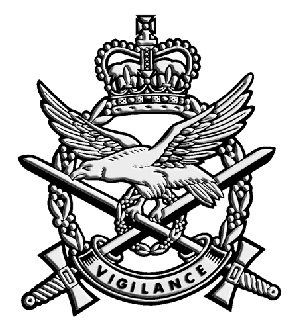
The Australian Army Aviation (AAAvn) is an administrative corps of the Australian Army. It was formed on 1 July 1968. The motto of the Australian Army Aviation corps is Vigilance.
The Australian Defence Organisation (ADO) is composed of the armed forces of the Commonwealth of Australia, the Australian Defence Force (ADF), and the Australian Public Service government department, the Department of Defence which is composed of a range of civilian support organisations.

The Australian Defence Force Investigative Service (ADFIS) is the unified investigative arm of the Australian Defence Force's Joint Military Police Unit. Initially formed in 2007 as a part of the service police until its amalgamation into the Joint Military Police Force at the beginning of 2020. ADFIS was responsible for complex and major disciplinary and criminal investigations involving the Australian Defence Force (ADF), its assets, land, personnel and capability.

4th/3rd Battalion, Royal New South Wales Regiment is a Reserve light infantry battalion of the Australian Army. 4/3 RNSWR has been deployed on active service on many peacekeeping operations and exercises within Australia and around the world. The Battalion is currently based at Sutherland, New South Wales where it forms part of the 5th Brigade.
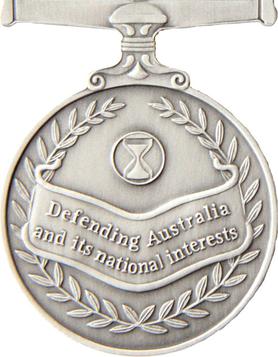
The Australian Operational Service Medal is a campaign medal established on 22 May 2012 to recognise service by Australian Defence Force (ADF) personnel on designated hazardous operations. It may also be awarded to civilians who serve alongside the ADF on designated operations under specific conditions.